当前位置:网站首页>Camera calibration (2): summary of monocular camera calibration
Camera calibration (2): summary of monocular camera calibration
2022-07-07 11:47:00 【@BangBang】
1. Review of coordinate system transformation
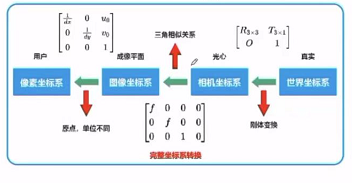
- First, the world coordinate system is rotated 、 The translation matrix is transformed into the camera coordinate system
- The camera coordinate system passes through similar triangles ( Principle of pinhole imaging ), Convert camera coordinate system to image coordinate system , What we use here is actually the focal length of the camera .
- It is best to use camera internal reference , Convert image coordinate system to pixel coordinate system .
Camera calibration
The purpose of camera calibration is to obtain the internal and external parameters and distortion parameters of the camera .
Camera calibration process

- 1. Print calibration board
- 2. Shoot the calibration plate from different angles
- 3. use opencv The characteristic points in the interface detection calibration board ( Generally, square is used , Check its corners )
- 4. Find the internal and external parameters of the ideal without distortion
- 5. The maximum likelihood estimation is used to iteratively optimize the accuracy ( Use Zhang Zhengyou calibration method to solve internal and external parameters , In fact, it is an initial value of iterative solution of maximum likelihood estimation , Given the initial solution parameters , In order to obtain more accurate internal and external parameters, we need to use iterative method to optimize )
- 6. The radial distortion parameters are solved by the least square method
- 7. Comprehensive internal and external parameters 、 Distortion parameters , Using the maximum likelihood method , Improve estimation accuracy
- 8 It's best for us to calculate internal and external parameters distortion coefficient of the camera
Camera calibration trick
Calibration plate pattern
We usually use checkerboard to calibrate the board pattern , But we don't have to use checkerboards , Other patterns can be used .
- have access to
The three dimensional 、 A two-dimensional , circular , grid , Random patterns.( If you use black and white checkerboard , It will be easier to detect corners ; If you use a circle , It will detect the center of the circle .Opencv Both interfaces are provided ) - Generally choose to use multiple perspectives of plane objects , Instead of constructing three-dimensional objects .
Number of checkerboard corners and parameters
- The number of calibration plates is generally the more the better , There are more grids per calibration board . Without introducing noise
- Total number of parameters : Four camera internal parameters
($f_x,f_y,u_0,v_0$),5 Distortion parameters(k1~k3,p1,p2),3 Two rotation parameters ( One parameter per axis , Can determine the rotation matrix ),3 Translation parameters . - Suppose the checkerboard has N Corner points ,K Images in different positions
- K Checkerboard provides 2NK A constraint , Two constraints per corner
- Temporarily ignore the distortion parameter : Yes
4Internal parameters ,6External parameters ( Take different pictures in different positions , The rotation translation matrix is different , The external parameters are different ) - The premise of being able to solve parameters :
2NK( constraint ) >6K +4, Introduction(N-3)*K>2, Only when the number of equations is greater than the parameters can it be solved - Homography matrix ,
adopt 4 A point can be uniquely determined,4 A point can express a plane perspective , stay 4 Extend edges in both directions - No matter how many points there are on the chessboard , Only four effective corner information are actually useful
- K>1 , You need to shoot at least two checkerboards
- Considering noise and numerical stability , You need to use a larger checkerboard , Capture more images
- For more effective effect , In general use
10More than one ,7*8Or a larger chessboard . Collect more pictures , Filter these graphs , Choose a more effective picture , Images with high noise can be removed .
How to evaluate the calibration effect of the camera
Evaluate the re projection error :
Without the real parameters of the camera , Evaluate the effect of camera calibration
- Corner of the detected two-dimensional image , The distance between the projection point and the real-world three-dimensional point ;
- Use the camera internal and external parameters obtained by calibration , Project the three-dimensional world points to the two-dimensional points in the pixel coordinate system
- And then with the corner of the two-dimensional picture detected by the algorithm , Calculate the mean square error RM
We will take a camera to shoot a checkerboard , Shooting a checkerboard will get a two-dimensional image , Two dimensional images can be used opencv Feature point detection algorithm , It can detect the corner coordinates of the two-dimensional image A; in addition , When shooting a checkerboard, we know its coordinates in the world coordinate system , Then we use the camera internal and external parameters and distortion parameters we have solved , To coordinate matrix transformation , The coordinates of the corners of the chessboard are obtained through calculation B. And then to solve A,B The mean square error of RMS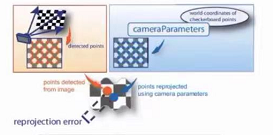
- It is acceptable that the average projection error is less than one pixel
- Calculate the re projection error of each graph , It can be used to select pictures with large errors
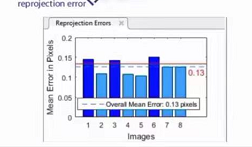
External parameter visualization - View of the calibration board with the camera as the center
- View of the camera centered on the calibration plate , Visualize external parameters
- The camera is fixed , Calibration plate movement , Suitable for camera centric views
- conversely , It is suitable to use the view with calibration as the center
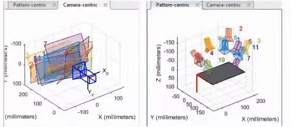
Observe the image after distortion correction
- Observe the chessboard after distortion correction , Whether the curved line becomes straight , It is suitable for cases with obvious distortion 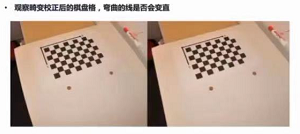
How to improve the effect of camera calibration
Add more pictures
The calibration plate covers the complete image , Especially the image edge 、 Where the distortion is relatively large at the corner
The calibrated image needs enough changes , Different angles , Different positions
Remove picture , For noisy pictures
Remove blurred pictures
The inclination of the removed calibration plate relative to the camera is greater than 45 degree
边栏推荐
- 【神经网络】卷积神经网络CNN【含Matlab源码 1932期】
- 大佬们有没有人遇到过 flink oracle cdc,读取一个没有更新操作的表,隔十几秒就重复读取
- Activity lifecycle
- Flet教程之 18 Divider 分隔符组件 基础入门(教程含源码)
- Neural approvals to conversational AI (1)
- Tsinghua Yaoban programmers, online marriage was scolded?
- The Oracle message permission under the local Navicat connection liunx is insufficient
- LeetCode - 面试题17.24 最大子矩阵
- CMU15445 (Fall 2019) 之 Project#2 - Hash Table 详解
- R语言使用magick包的image_mosaic函数和image_flatten函数把多张图片堆叠在一起形成堆叠组合图像(Stack layers on top of each other)
猜你喜欢

Talk about SOC startup (VI) uboot startup process II
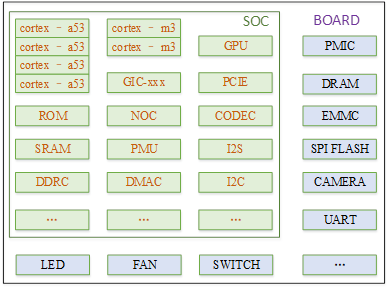
聊聊SOC启动(九) 为uboot 添加新的board
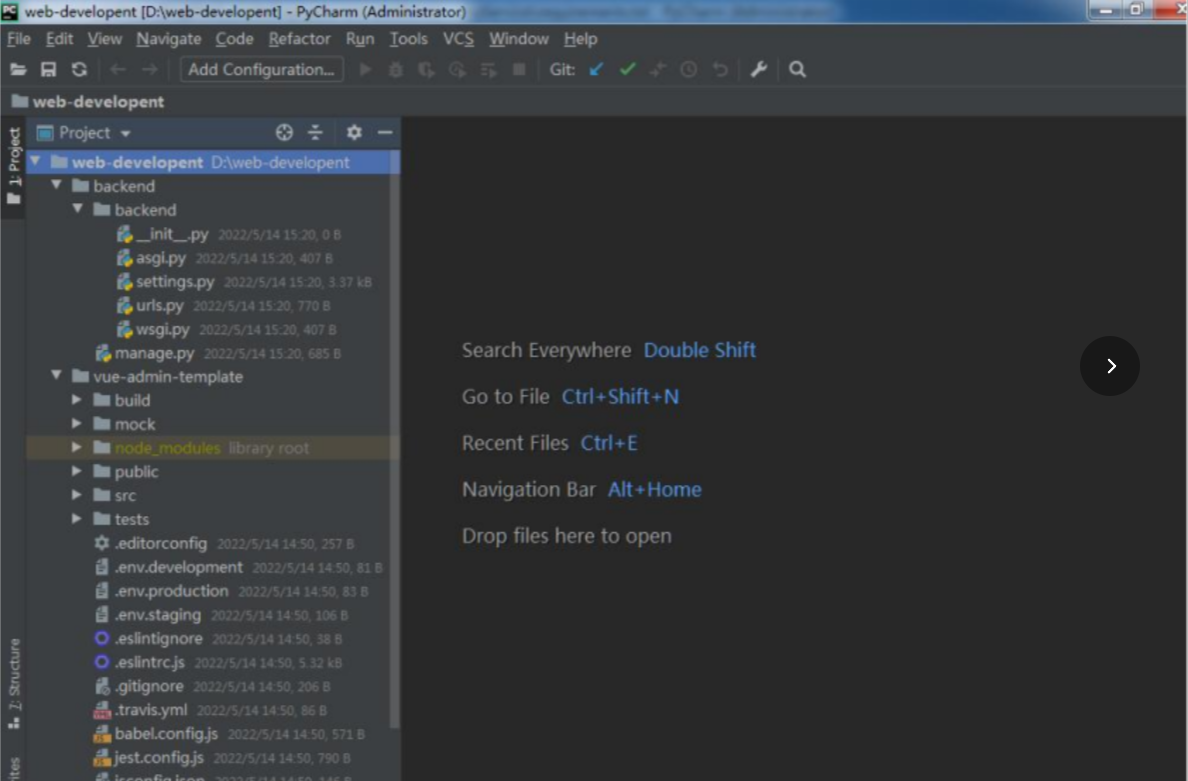
Test the foundation of development, and teach you to prepare for a fully functional web platform environment

Unsupervised learning of visual features by contracting cluster assignments
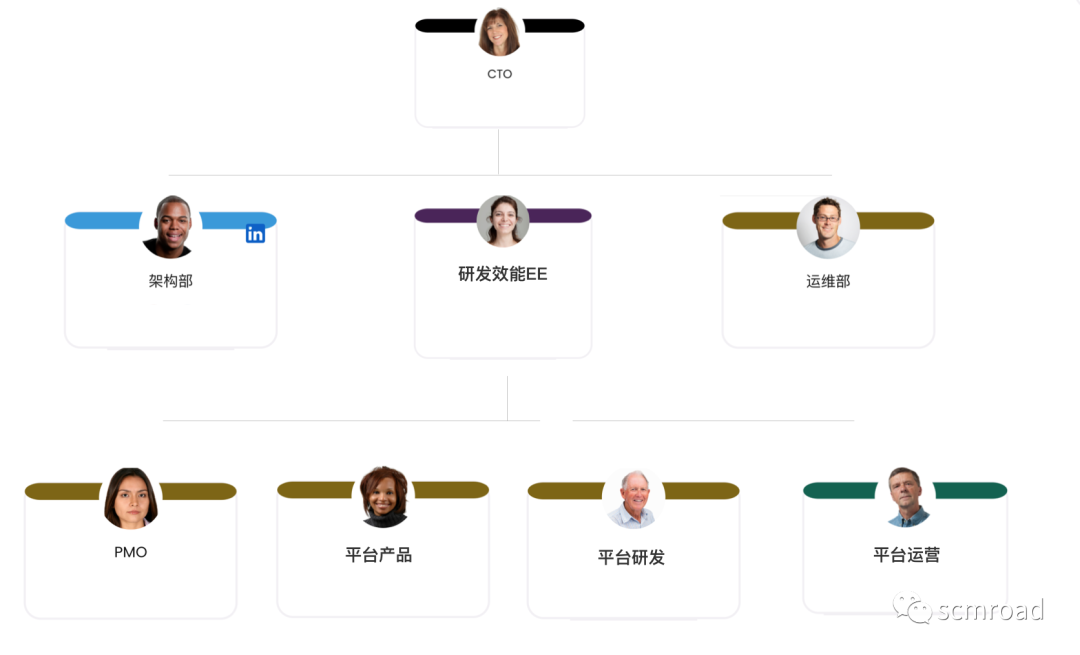
千人規模互聯網公司研發效能成功之路

對比學習之 Unsupervised Learning of Visual Features by Contrasting Cluster Assignments

sql里,我想设置外键,为什么出现这个问题

使用MeterSphere让你的测试工作持续高效
![[system design] index monitoring and alarm system](/img/8e/9c4c168f7f2b8e1f0786a5fe158544.png)
[system design] index monitoring and alarm system

SwiftUI Swift 内功之如何在 Swift 中进行自动三角函数计算
随机推荐
Half of the people don't know the difference between for and foreach???
La voie du succès de la R & D des entreprises Internet à l’échelle des milliers de personnes
Unsupervised learning of visual features by contracting cluster assignments
Electron adding SQLite database
R语言可视化分面图、假设检验、多变量分组t检验、可视化多变量分组分面箱图(faceting boxplot)并添加显著性水平、添加抖动数据点(jitter points)
Reasons for the failure of web side automation test
超标量处理器设计 姚永斌 第10章 指令提交 摘录
使用MeterSphere让你的测试工作持续高效
Fleet tutorial 19 introduction to verticaldivider separator component Foundation (tutorial includes source code)
基于华为云IOT设计智能称重系统(STM32)
Two week selection of tdengine community issues | phase II
electron添加SQLite数据库
How much do you know about excel formula?
STM32入门开发 编写DS18B20温度传感器驱动(读取环境温度、支持级联)
通过环境变量将 Pod 信息呈现给容器
What is cloud computing?
There are so many factors that imprison you
【全栈计划 —— 编程语言之C#】基础入门知识一文懂
Qt 实现容器的DELETE的方式
STM32F1与STM32CubeIDE编程实例-315M超再生无线遥控模块驱动